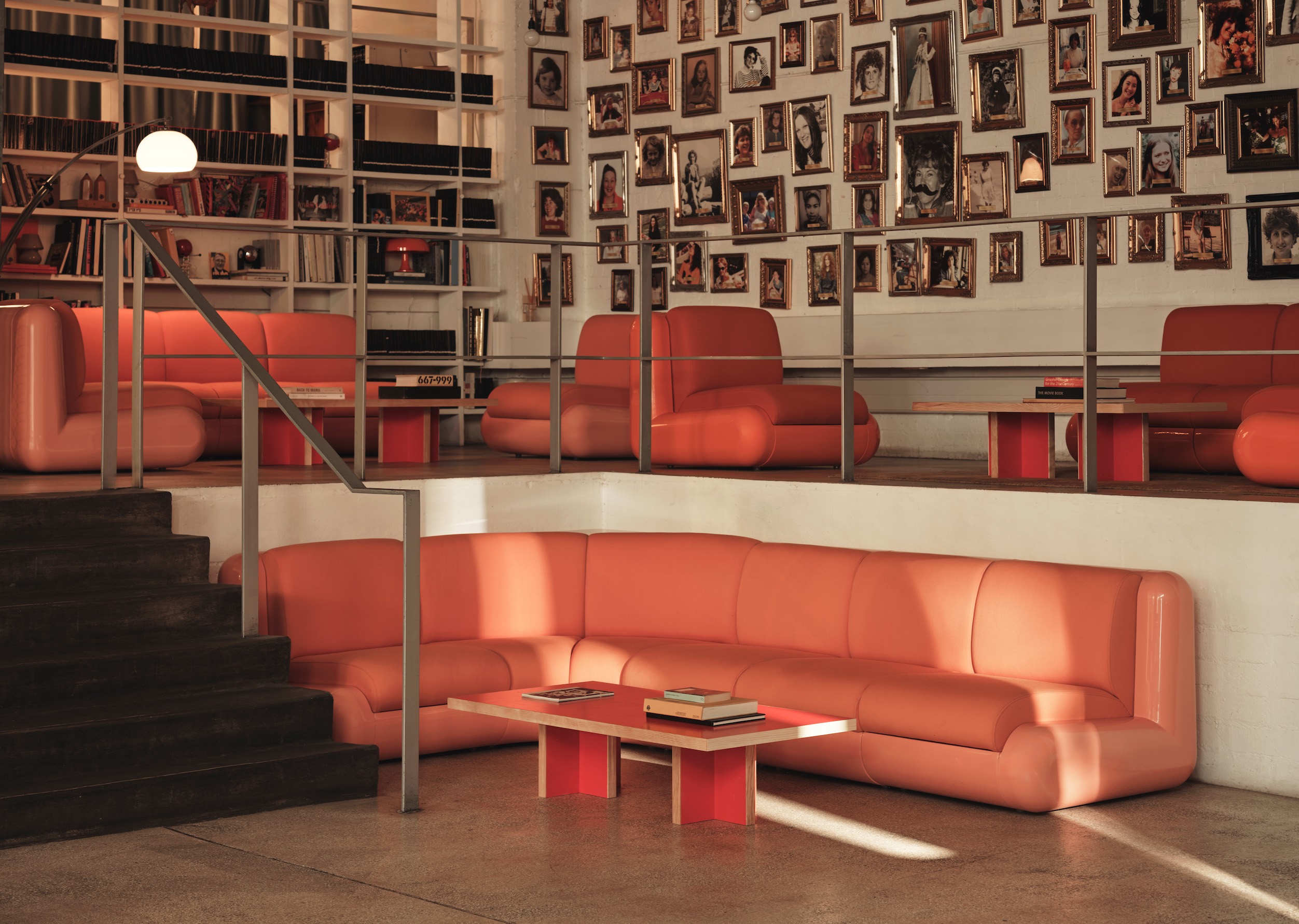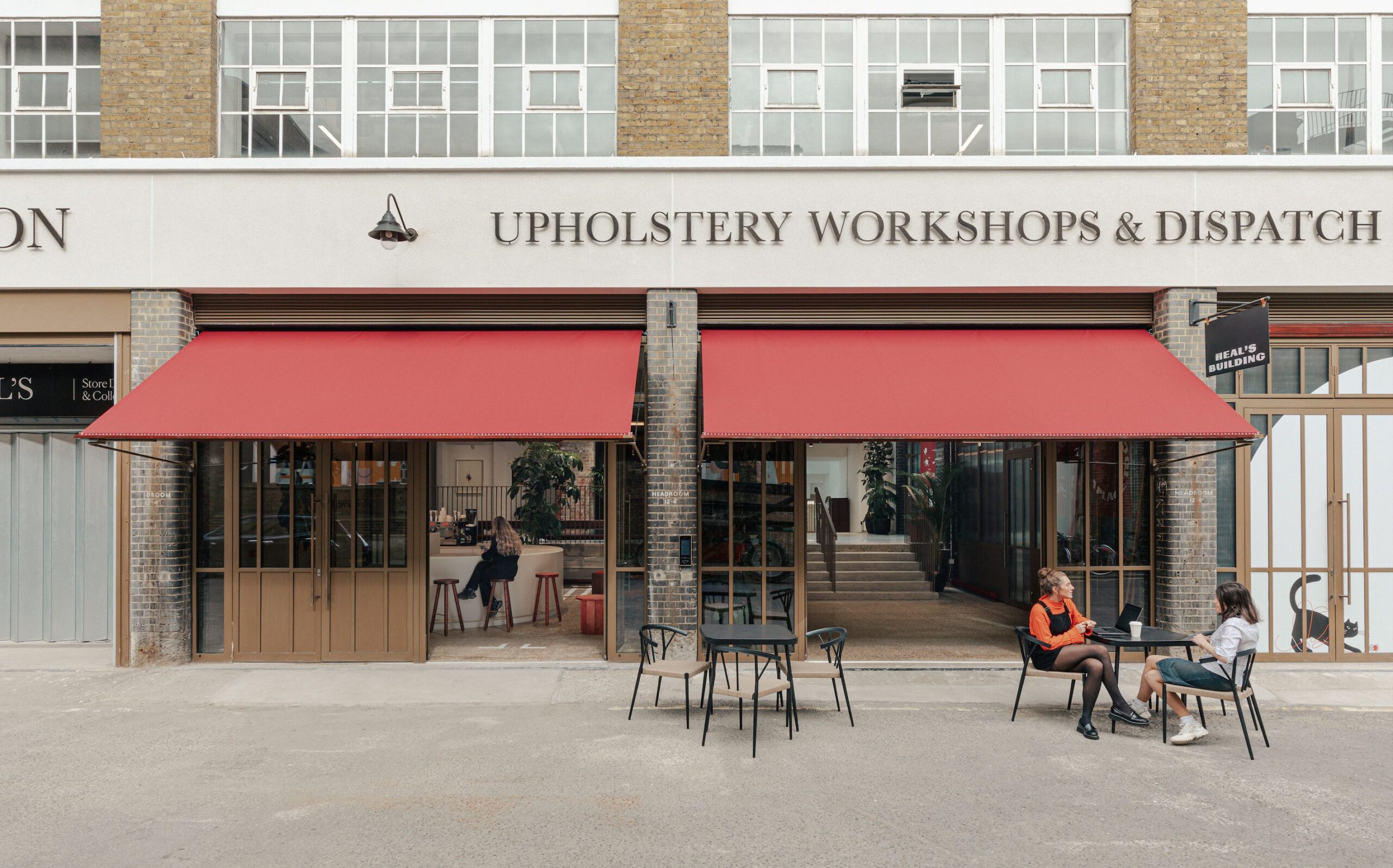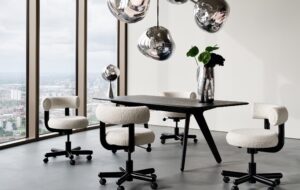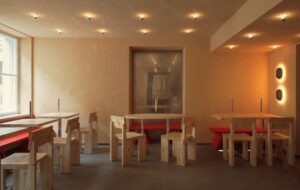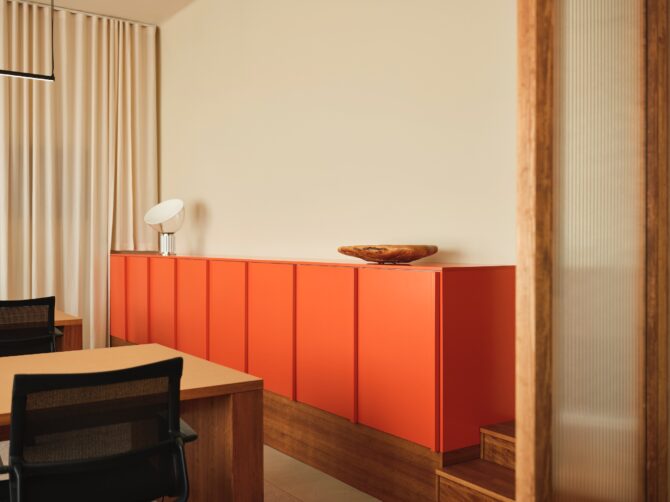
For Samsen Technology, Note Design Studio created a space where the best aspects of home and social interior design meet the practicality of an office environment
Over the past decade we’ve seen tech industry workspaces navigate from science fiction and corporate modernism through to biophilia and beer fridges. Yet now in Stockholm, there’s a disruptor asserting that great ideas in the digital space start in physical spaces that have personality, warmth, elegance and culture.
Digital consultancy Samsen Technology’s new office, designed by Note Design Studio, looks more like an aspirational apartment than a stereotypical hub of tech innovation. In an early 20th-century building that was formerly a boutique, timber-framed ribbed glass partitions now frame a living room, kitchen, library and open-plan workspace seating eight people.
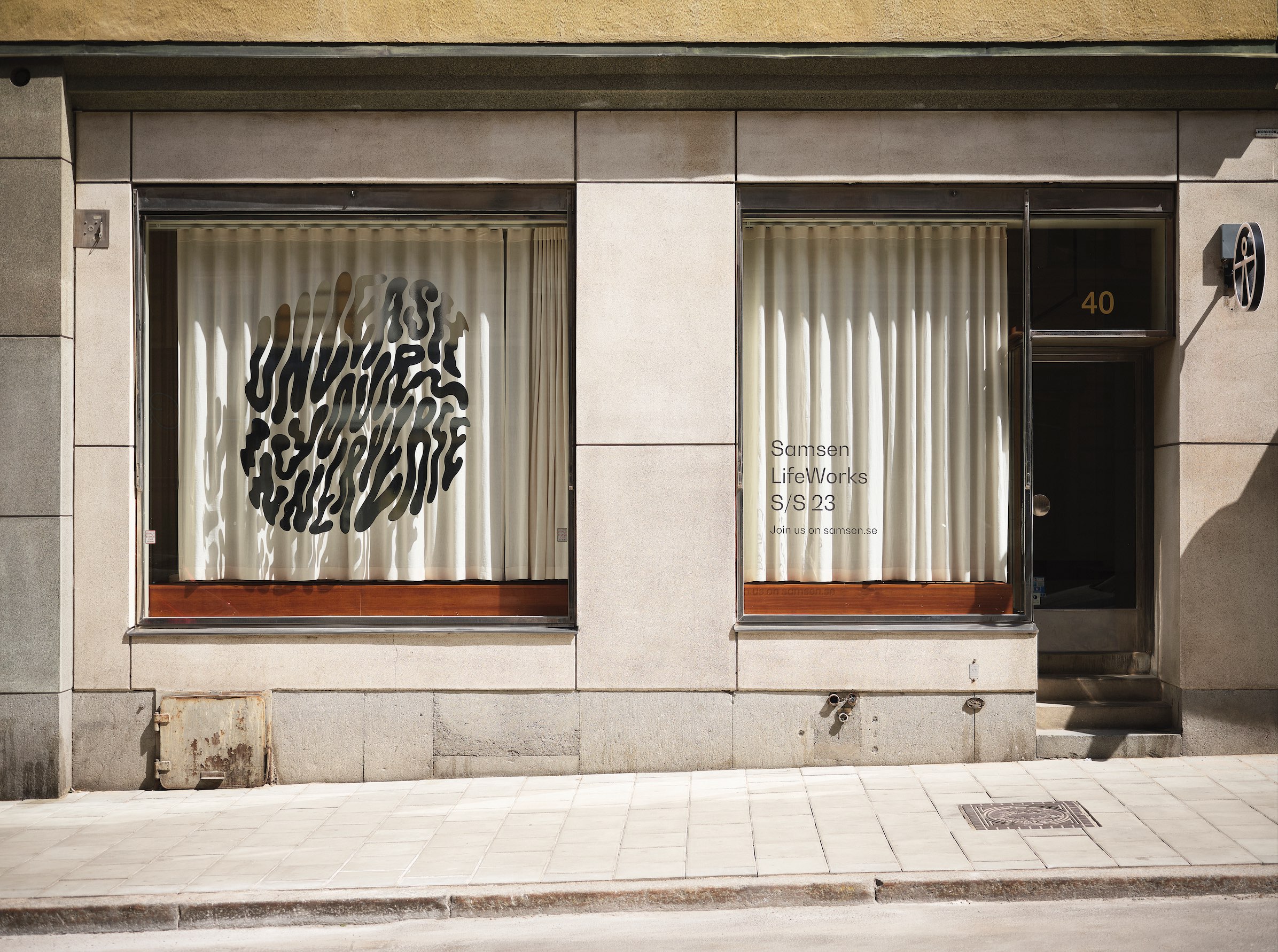
There are soft textiles, design objects, custom furniture and the original wooden floorboards – and not a fake plant or acoustic booth in sight. Encouraging personalisation and individuality is at the heart of Samsen Technology’s approach to the digital space. Adrian Sigot and Tomas Måsviken founded the company in 2020 on the principles of prioritising the individual user experience through digital product, system and brand design, and they have since worked with leading tech brands such as Klarna and Spotify. So, it only felt natural that these values should be present in their physical workspace too.
Well-placed to interpret these desires, Note Design Studio moves at ease between the realms of digital and physical design. Its projects include creating pendant lights, outdoor furniture and towel dryers; devising brand identities, look books and fair stands; and designing interiors for a diagnostics clinic and a restaurant. For Susanna Wåhlin, Interior Architect at Note Design Studio, in each case it’s about creating ‘identity in spatial form’, be it digital or physical.
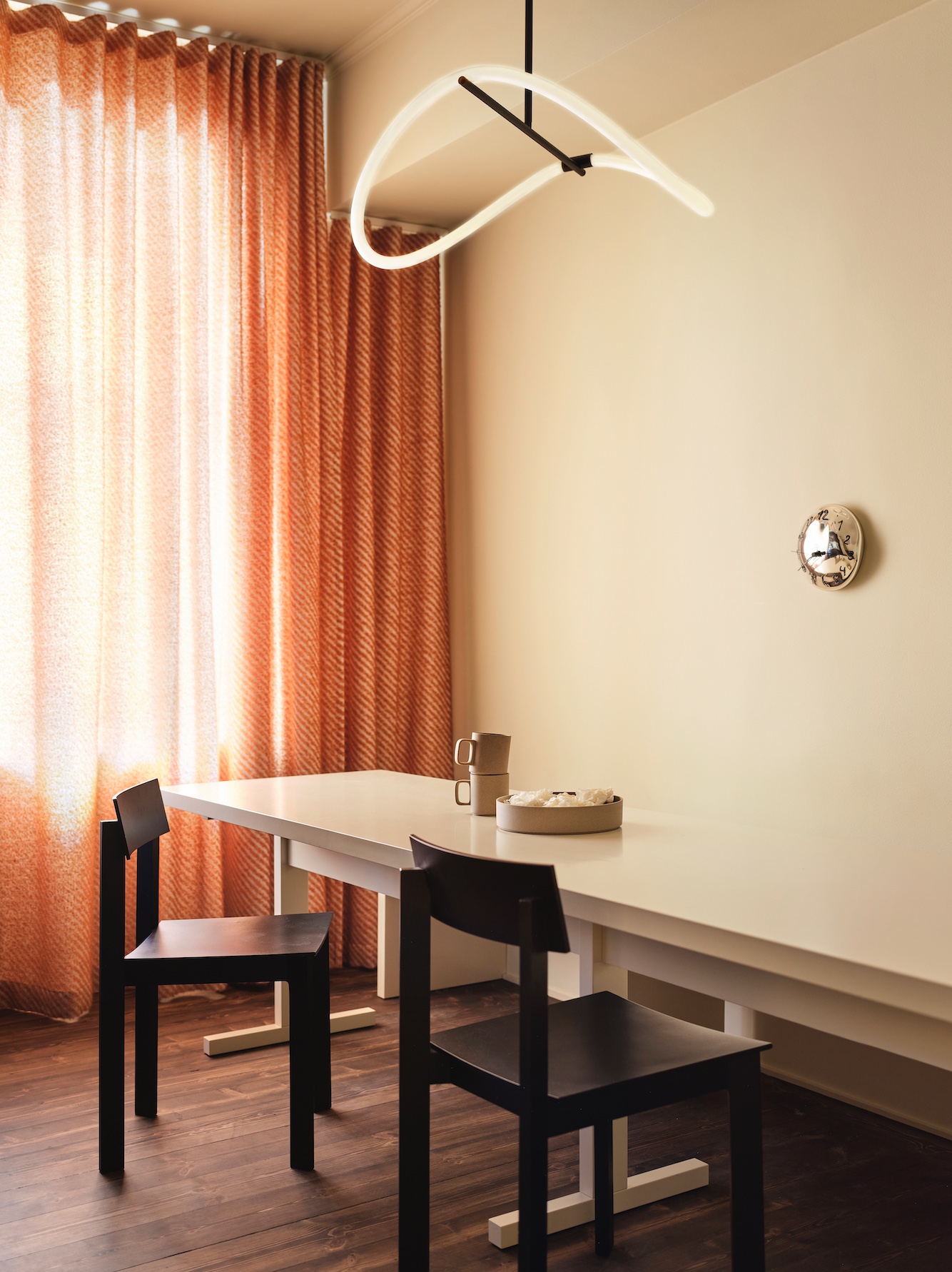
“They are two different places, yet you meet and interact in both of them. We want to create spaces that make you feel something,” she says. Samsen wanted a ‘second home office’ for employees based on human-centric activities of connecting, sharing and focusing. A space where, in the post-pandemic context, comfort and elegance would be the tools for re-inspiring employees and recruiting new talent. The cosy library has a shag rug, a snuggly beige-upholstered corner sofa, honey-stained Swedish pine bookshelves and an Ingo Maurer pendant lamp. Custom sit-stand desks, made by local carpenters CAJ Möbler in natural linoleum, resemble pieces of mid-century modern furniture more than office furnishings.
Instead of resisting hybrid working styles that see individuals setting their own balance of remote and office working, Samsen Technology has embraced the new trend by mirroring the home-work environment in its workspace interiors. In 2021, Note designed another unconventional workspace for Samsen: a wine bar named Samsen Atelier that was created as a place for socialising, creative meetings and sharing passions. Instead of forcing people to give up working from home (or their local wine bar), why not recreate these interactive, social spaces in the office?

With timber-lined walls and a warm atmosphere, the wine-bar décor was inspired by modern and traditional Japanese interiors, a concept that Wåhlin chose to continue for the new office. “Japanese design uses small spaces in a smart way, keeping it simple and fundamental. What you need is there and it is well taken care of – that’s it. Since Samsen’s [new] space was small with a simple layout, we borrowed clever tools to create a design with a rich, yet simple, spatial experience,” she says.
To a classic base of custom, space-saving devices built of timber, Note brought vibrancy and modernity through functional, stylish design pieces. Vitra’s Physix work chairs and pendant lamps by Vibia “set a beautiful, sharp contrast to all the softness in the space”. Poppy-orange cabinets and textiles were specifically chosen to contrast with the neutral backdrop and inspire alertness alongside comfort. “We’ve put a lot of time, effort and gut-feeling into every choice we’ve made, all to find the right balance of light, darkness, richness in materiality and comfort for the body and the eye,” says Wåhlin.
As the binaries of work and life, physical and digital seem to be increasingly blurred, the word ‘balance’ is taking on new meaning. Instead of two opposing poles balancing each other out, balance is found in the total dissolution and blending of opposites. It’s a progressive approach to workspace design that does feel like an advancement – and if there’s a cosy corner sofa and a wine bar involved, we’re not complaining.
Images by Jocke Ono
Enjoyed this article? Subscribe to our weekly newsletter here





